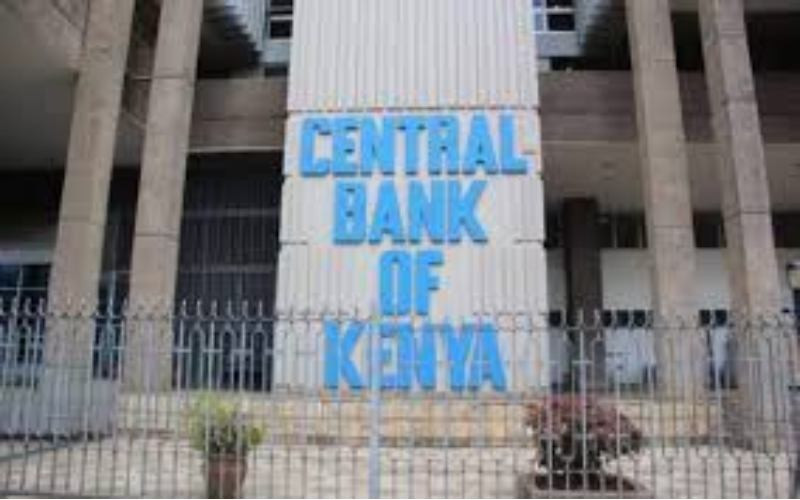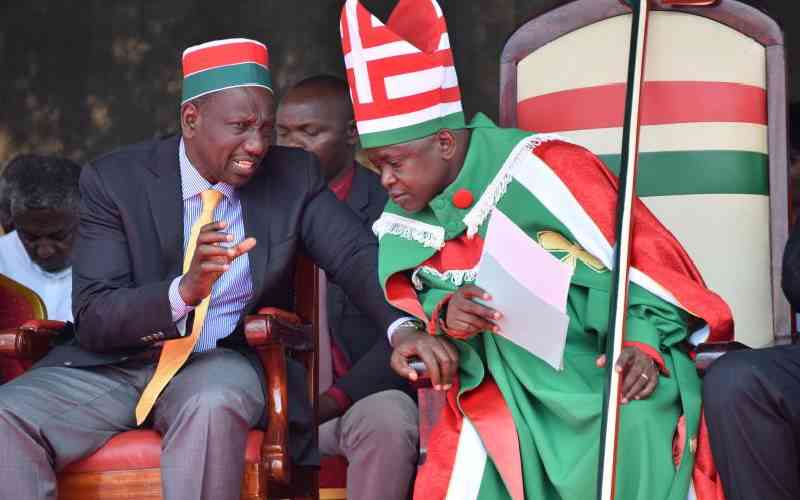NAIROBI: The shilling weakened to a new three-year low Monday as traders said they were watching for any action the Central Bank might take to support the currency.
Commercial banks quoted the shilling at 93.15/35, compared with 92.95/93.05 at Friday’s close. The shilling was last at that level in November 2011.
“Everyone is waiting to see what action Central Bank will take,” I&M Bank Head of trading Sheikh Mehran said. The banking sector regulator has previously sold dollars to protect the currency and has regularly mopped up excess liquidity to make it costlier to hold dollars.
Central Bank of Kenya (CBK) sold an unspecified amount of dollars to commercial banks last Tuesday after the shilling hit an intra-day low of 92.82/92. A second trader at a major Kenyan commercial bank said Kenya’s faltering tourism sector, a key earner of hard currency, had also put pressure on the currency.
“The supply side remains constrained,” the trader said, referring to a trickle of hard currency. Hoteliers in a country that counts tourism as one of its major foreign exchange earners say visitors cancelled bookings after an attack by Al-Shabaab gunmen that killed 148 people at Garissa University College in the north east of the country.
The shilling has lost 3.1 per cent to the dollar so far this year. But Francis Mwangi, an analyst at the Standard Investment Bank, said the positive prospects of the US economy was the main reason the Kenyan currency had dipped.
“The US dollar has gained against all major currencies on the prospects of strong growth in the economy,” Mr Mwangi explained. Japan’s currency had also gained against the other currencies, he added, making the two currencies the biggest gainers in the World.
TERROR ATTACKS
He explained that the recent slip in the currency had little to do with the drop in tourist arrivals following the rising threat of terror attacks in Kenya. “If it had anything to do with tourist cancellations, the drop would not be against the US dollar alone but rather against the other European currencies,” said Mwangi.
Sustained decline of the Kenyan Shillings is reflected in higher cost of living, since nearly all imports into the country are paid for in the US dollar. It is projected that the weaker shilling will reflect on higher inflation in the coming months.
Kenya’s inflation figures for March as tracked by the bureau of statistics showed a steady rise in the cost of living, with a spike in vegetable prices being the biggest contributor.
But a weaker shilling is likely to reverse the easing cost of energy and petroleum products, which are all imported and paid for in dollars.
The Energy Regulation Commission had already explained that strengthening of the dollar against the Kenyan currency was the main reason prices of petroleum products had remained high despite the sharp drop of crude oil prices in the international markets.
 The Standard Group Plc is a
multi-media organization with investments in media platforms spanning newspaper
print operations, television, radio broadcasting, digital and online services. The
Standard Group is recognized as a leading multi-media house in Kenya with a key
influence in matters of national and international interest.
The Standard Group Plc is a
multi-media organization with investments in media platforms spanning newspaper
print operations, television, radio broadcasting, digital and online services. The
Standard Group is recognized as a leading multi-media house in Kenya with a key
influence in matters of national and international interest.
 The Standard Group Plc is a
multi-media organization with investments in media platforms spanning newspaper
print operations, television, radio broadcasting, digital and online services. The
Standard Group is recognized as a leading multi-media house in Kenya with a key
influence in matters of national and international interest.
The Standard Group Plc is a
multi-media organization with investments in media platforms spanning newspaper
print operations, television, radio broadcasting, digital and online services. The
Standard Group is recognized as a leading multi-media house in Kenya with a key
influence in matters of national and international interest.









